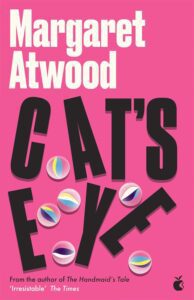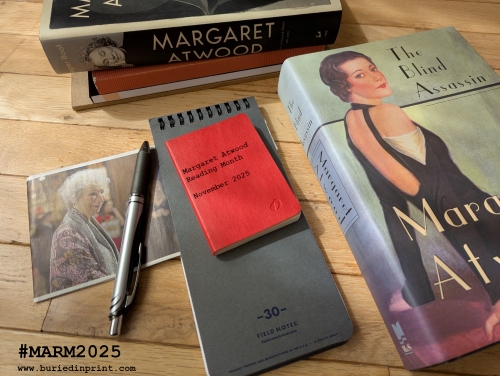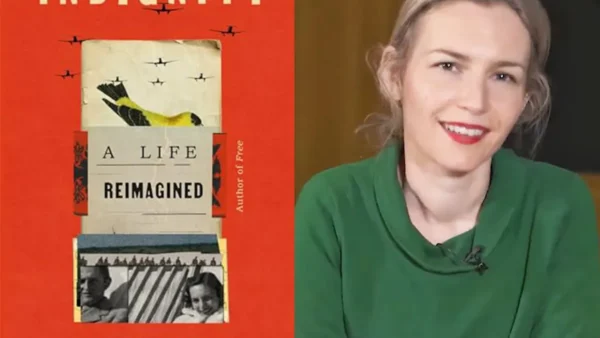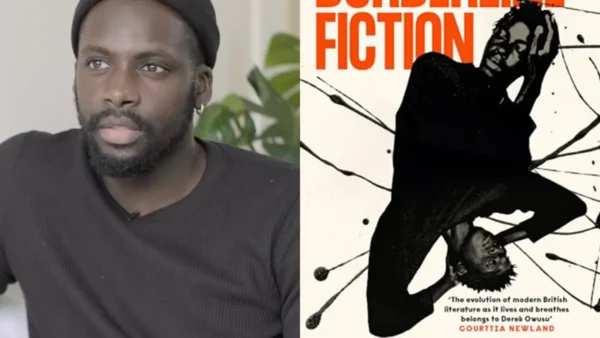My review of Cat’s Eye by Margaret Atwood, the story of a middle-aged artist who recalls traumatic bullying in her childhood.
For this year’s Margaret Atwood Reading Month, I read Cat’s Eye, a novel about a successful painter who returns to her home city of Toronto for a retrospective exhibition and ends up revisiting the trauma of being bullied as a nine-year-old child by her ‘friend’ Cordelia.
The bullying is central to the story, but Cat’s Eye is also about much more than that. The novel takes us forward through Elaine Risley’s life to see what happened after, how the experience shaped her and continues to affect her decades later. Although the story of the bullying itself is powerful, things got more interesting for me when they all got older and the roles of victim and perpetrator became more blurred.
“I’m not afraid of seeing Cordelia. I’m afraid of being Cordelia. Because in some ways we changed places, and I’ve forgotten when.”
The name Cat’s Eye comes from the special cat’s eye marble that Elaine cherishes as a child. She keeps it in a red plastic purse, and it’s one of the few things she can hold onto amid the misery of being treated so horribly by Cordelia and her two other friends. It’s a symbol of hope, and there’s a moment when Cordelia seems about to take the marble from her and it seems essential for Elaine to hold onto it, which she does through a casual lie. When the adult Elaine rediscovers the red plastic purse years later, it triggers memories that she’s long suppressed.
Atwood does a great job of taking us into Elaine’s world, painting a picture of postwar Toronto suburbia that seems very confined and claustrophobic. Elaine’s parents seemed ordinary enough to me, but they are different enough to stand out amid the sameness around them, and Elaine stands out too for being more comfortable accompanying her entomologist father on bug-hunting expeditions or playing boyish games with older brother Stephen than conforming to the behaviour expected of girls at the time.
What I found most heartbreaking about the bullying was not the cruelty of Cordelia or even the cowardice of the other friends who go along with it, but the way Elaine accepts it and keeps desperately trying to please them. Her ‘friends’ keep telling her that everything she does is wrong and they’re just trying to help her improve, and she believes them and tries to be better, even though nothing is ever good enough.
“Cordelia is my friend. She likes me, she wants to help me, they all do. They are my friends, my girlfriends, my best friends. I have never had any before and I’m terrified of losing them. I want to please. Hatred would have been easier. With hatred, I would have known what to do. Hatred is clear, metallic, one-handed, unwavering; unlike love.”
It’s a relief when, after a particularly nasty episode that almost kills her, Elaine finally realises that these people are not her friends and she doesn’t need to listen to them. As soon as this happens, the bullies lose their power over her. Their bullying was mostly not physical but emotional and psychological, so when Elaine stops believing in their power, it ceases to exist. Elaine finds a new friend, and her tormentors quickly fade into the background of her life, before they all move on to different schools.
However, the story is far from over at this point. Elaine may have escaped from Cordelia’s grasp, but she has not recovered completely. There’s a brittleness to her, perfectly captured in the image she gives of herself at that time as “happy as a clam: hard-shelled, firmly closed.” When her mother refers to “that bad time you had”, Elaine has no idea what she’s talking about. She has survived and moved on by blocking all memory of the trauma.
Although she’s blocked the details out, the cruelty still shapes how Elaine sees the world. When she and Cordelia reconnect as teenagers, the dynamic has changed completely. Now it’s Elaine who is in control. She doesn’t take revenge exactly (she is so deep in denial that she doesn’t even know what to take revenge for), but she does behave with a cruelty that she never knew before.
“I can’t account for my own savagery.”
The novel is structured in 15 sections, each of which begins with a chapter from Elaine’s life as an adult before going back to the past. In the adult sections, we see how that childhood trauma continues to affect her. Even when she stops to help a drunk on the streets of Toronto as everyone else walks past, she sees Cordelia’s green eyes in her and draws her hand back sharply. Despite trying to do good, she fails:
“I know too much to be good. I know myself. I know myself to be vengeful, greedy, secretive and sly.”
As the past sections move forward into young adulthood and gradually catch up to the present day, we see how Elaine has been professionally successful but still is that hard-shelled clam, protecting herself from being hurt again by keeping herself firmly closed. It’s only when she returns to Toronto and begins to examine the painful childhood memories let loose by that cat’s eye marble that she has a chance of prising the shell open.
I read Cat’s Eye as an e-book, and I was surprised to discover afterwards that in print it’s about 500 pages long. It didn’t feel like a particularly long novel to me, which is probably a good sign. There’s plenty of depth here, plenty to explore in Elaine’s life, and that’s probably why it made the Booker shortlist back in 1989 (losing to Ishiguro’s The Remains of the Day). I haven’t read much Atwood, and this made me want to read more.
You can find some different perspectives on this book by reading the reviews by Bill and Marcie from a previous edition of Margaret Atwood Reading Month. Have you read Cat’s Eye? Do you have a favourite Atwood novel or a recommendation for what I should read next? Let me know in the comments.






There is 1 comment
Thanks for the link Andrew. After 4 or 5 MARMS I think Cat’s Eye might be my favourite Atwood.. I’ve read a few of her early ones now and she returns over and over to the ravine and being bullied. You get the impression she’s working something out.